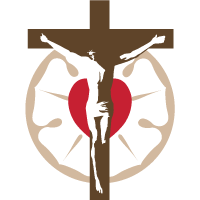by Mr. Jonathan Swett Philipp Nicolai’s two most famous hymns–for which he was both author and composer–are “Wake, Awake, for Night Is Flying” (Wachet auf, ruft uns die Stimme) and “O Morning Star, How Fair and Bright” (Wie schön leuchtet der Morgenstern). The fact that these have been commonly referred to as the “King and… Read More >
Dürer’s Christ Among the Doctors
by Dcs. Carolyn S. Brinkley Faces, hands, and books swirl around the divine Child in Albrecht Dürer’s oil painting Christ Among the Doctors. The artist’s rendition of Luke 2:41-52 is far from a typical, placid, generic temple scene. Rather the mood is surreal and has a nightmarish quality. Dürer draws you, the viewer, into the inner sanctum of the learned… Read More >
Katharina von Bora Luther
by Dr. Jack Kilcrease Katharina von Bora is most famous for being the wife of Martin Luther. Traditionally, sources have suggested she was born in 1499. Nevertheless, because early modern Europe was lacking in birth certificates, there is no direct evidence of this. There is also something of a dispute about the location of her… Read More >
Lutheran Advent Traditions
by Dcs. Betsy Karkan At a time when much of the world is frantically gift shopping, putting up Christmas lawn decorations and anticipating the arrival of Santa Claus, Christians around the world are observing the liturgical season of Advent. From the Latin word for “coming”, Advent is a time of preparation and anticipation for the… Read More >
“The Bridegroom Soon Will Call Us”
by Mr. Jonathan A. Swett The uplifting expression of faith and joy at Christ’s second coming in “The Bridegroom Soon Will Call Us” (LSB 514) by Johann Walter and Michael Praetorius reminds us that there is meaningful history in so many of our great Lutheran hymns. You may recall that Walter is affectionately known as… Read More >
Albrecht Dürer’s Four Horsemen
by Dcs. Carolyn Brinkley Powerful, intriguing, and terrifying! The Four Horseman woodcut is from Albrecht Dürer’s Apocalypse series published in Nuremberg in 1511. The scene evokes a feeling of unstoppable devastation. It is almost as if the surging horses will leap from the printed page and the viewer will be caught in their path of… Read More >
Kingdom of the Left: Luther on Temporal Authority
by Rev. Aaron Moldenhauer Election day in the United States is near, providing a good occasion to consider temporal authority. Since the twentieth century, Lutherans have spoken about a “two-kingdoms” doctrine to work out the relationship between church and state.[1] Martin Luther, living before this vocabulary developed, worked with concepts of “two governments” or “two… Read More >
The Ninety-Five Theses
by Dr. Jack Kilcrease To understand the 95 Theses, we must first examine the nature of indulgences. According Roman Catholic theology, within the process of confession and absolution there is a distinction between “eternal punishment” and “temporal punishment” due to sin. All sin is worthy of damnation (i.e., eternal punishment). When a person comes to… Read More >
Philipp Nicolai
by Rev. Stephen Preus If you are a Lutheran, chances are that the music of Philipp Nicolai has delighted your ears and his words have flowed joyfully from your tongue.[1] Nicolai is the writer of text and tune of what have become known as the “Queen of Chorales” (“O Morning Star, How Fair and Bright”)[2]… Read More >
“Lord, Keep Us Steadfast in Your Word”
by Rev. Dr. Mark Birkholz Luther’s Reformation hymn, “Lord, Keep Us Steadfast in Your Word” (LSB 655) is one of his best known compositions. When it was published in 1542, it appeared with the subtitle, “A Children’s Hymn, to be Sung Against the Two Archenemies of Christ and His Holy Church, the Pope and Turk.”[1] … Read More >
